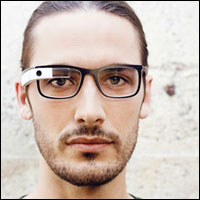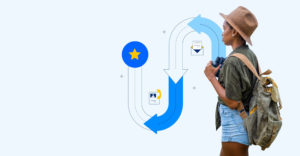
Google last week debuted several trendy eyeglass frames for Glass, enabling the device to shed its dorky look while accommodating prescription lenses.
The more natural look means consumers likely will be more accepting of Glass once it becomes generally available — assuming it also sports a price point more in line with most people’s budgets.
The new Glass frames and support for nearsighted and farsighted people — who make up roughly half of the U.S. population — are also a boon for a smaller constituency, but one that is more likely to buy the first wave of devices and apps when they hit the market: businesses that decide to use Glass in their customer service and field service operations.
This embrace of Glass for business — and customers’ acceptance of a service rep wearing Google Glass — will be far easier now that the device can be worn with less of a sci-fi effect.
CRM, productivity and field service hold huge potential for Google Glass, and apps with these use cases in mind are likely to materialize sooner rather than later.
On the Trade Show Floor
For instance, one expected CRM-type use for Google Glass — both with and without facial recognition — will be on trade show floors or at conferences. There are Glass apps under development that can line up profiles for people who have scheduled meetings throughout the day or who are attending a meet-and-greet. When facial recognition is part of the mix — and despite Congress’ concerns, I believe it inevitably will be — the use cases in this scenario multiply.
The new frames also will be more acceptable to reps making sales calls while sporting Glass. Here, Salesforce.com may play a significant role, as Adam Honig indicated last year.
An integration between Glass and Salesforce.com could go well beyond pulling up contact profiles. A special feature could automatically log reports in Salesforce — a task most sales people loathe, he speculated.
Such an integration holds real promise for sales coaching, according to Honig. An app could allow coaches to directly observe and record the calls their sales teams make.
“No more flying to Indianapolis for that sales call just to watch Joe Salesman pitch a client,” he wrote. “Now sales managers can provide feedback both after the call has ended or in real time!”
Field Service Reps and Google Glass
Another intriguing use case — which, again, seems far more likely to materialize with the new frames — is in the field. A generation ago, field service reps were the first to adopt mobile CRM in smartphones and tablets — and before then in specialized devices.
App developers are looking to replicate that trend in situations where Google Glass is easier to use. Sullivan Solar Power, for example, early this year announced that it had developed a Google Glass app that gives field technicians “volumes” of electrical system data.
“Having two free hands is critical in a rooftop environment,” said Michael Chagala, director of information technology for Sullivan Solar Power, when announcing the app.
Sullivan Solar sees Google Glass assisting with training — and being put to more ambitious uses too. Collaboration in the industry via live-streaming video conferencing functionality is one of its goals for Google Glass. This means a team of experts can be with the technician at the job site virtually in order to diagnose a problem.





















































